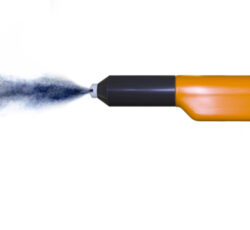 The Powder Coating Application Process
The Powder Coating Application Process
Powder coating is a popular finishing technique used to protect and enhance the appearance of various metal objects, from household appliances to automotive parts. Unlike traditional liquid paint, powder coating involves the application of a dry powder to the surface of the object, which is then cured through a heating process. In this blog post, we will dive into the powder coating application process, discussing the steps involved and the benefits of this method.
1. Surface Preparation
The first step in the powder coating application process is surface preparation. This crucial step ensures that the object’s surface is clean and free of any contaminants that could interfere with the coating’s adhesion. The object is thoroughly cleaned to remove dirt, grease, rust, or previous paint. This can be achieved through various methods, including chemical cleaning, sandblasting, or abrasive grinding. Proper surface preparation is essential to achieve a smooth and durable finish.
2. Powder Application
Once the surface is clean and prepared, the powder coating is applied. The powder consists of finely ground particles that can be made from various materials, such as polyester, epoxy, or polyurethane. There are different application methods available, including electrostatic spraying, fluidized bed dipping, or powder flocking. Electrostatic spraying is the most common method, where the powder is charged and sprayed onto the object using an electrostatic gun. The positive charge on the powder particles attracts them to the grounded object, ensuring even distribution.
3. Curing Process
After the powder is applied, the object is moved into a curing oven. The curing process involves exposing the coated object to high temperatures, typically ranging from 300 to 450 degrees Fahrenheit (150 to 230 degrees Celsius). As the powder is heated, it melts, flows, and chemically reacts to form a smooth, continuous film on the object’s surface. The curing time can vary depending on the powder used and the desired finish, but it typically takes around 10 to 30 minutes. The heat also activates any additives in the powder, such as catalysts or cross-linking agents, to enhance its durability.
4. Cool down and Inspection
After the curing process is complete, the object is allowed to cool down to room temperature. It is crucial to give the object adequate time to cool before handling to prevent any damage to the finish. Once cooled, a visual inspection is performed to ensure that the coating is even and free of any defects, such as bubbles, runs, or orange peel texture. Any imperfections can be addressed by either reapplying the powder coating or performing touch-up repairs.
5. Finishing Touches
Once the coating is inspected and approved, any necessary finishing touches can be made. This can include adding additional layers of coating for increased thickness or applying clear coat for added protection and gloss. Any masking or tape used during the powder coating process can be removed, and any small adjustments can be made to achieve the desired finish. The object is then ready to be installed, used, or delivered to the customer.
Benefits of Powder Coating
There are several benefits to using powder coating as a finishing method:
Durability: Powder coating creates a strong and durable finish that resists chipping, scratching, and fading, providing long-lasting protection for the object.
Variety of Options: Powder coatings come in a wide range of colors, finishes, and textures, allowing for endless possibilities in creating a desired look.
Eco-friendly: Powder coating is a more environmentally friendly option compared to liquid paint. The powder is free from volatile organic compounds (VOCs), and any excess powder can be collected and reused, minimizing waste.
Cost-effective: Powder coating can be a cost-effective option in the long run. The durability and resistance to damage mean fewer repairs or replacements, saving both time and money.
Time-efficient: The powder coating process is relatively quick compared to other coating methods. The curing time is shorter, and the absence of drying or curing times reduces overall production time.
Conclusion
The powder coating application process is a highly effective and versatile method for finishing metal objects. From surface preparation to curing and finishing touches, each step contributes to achieving a durable and visually appealing coating. The benefits of powder coating, including durability, variety of options, and eco-friendliness, make it a popular choice in various industries. Whether it’s for industrial equipment, household appliances, or automotive parts, powder coating provides a resilient and attractive finish.
Got Questions? Let Us Help!
Serving the area since 1997, Powder Vision Inc specializes in residential, commercial, and industrial powder coating restoration on cars and motorcycles, patio furniture, city maintenance, and signage for housing developments! We’ll provide everything you need for a complete and beautiful powder coating project all under one roof, including sandblasting and phosphate wash. Our team has more than 60 years combined of experience! Contact us today to learn more about what we can do for you!
